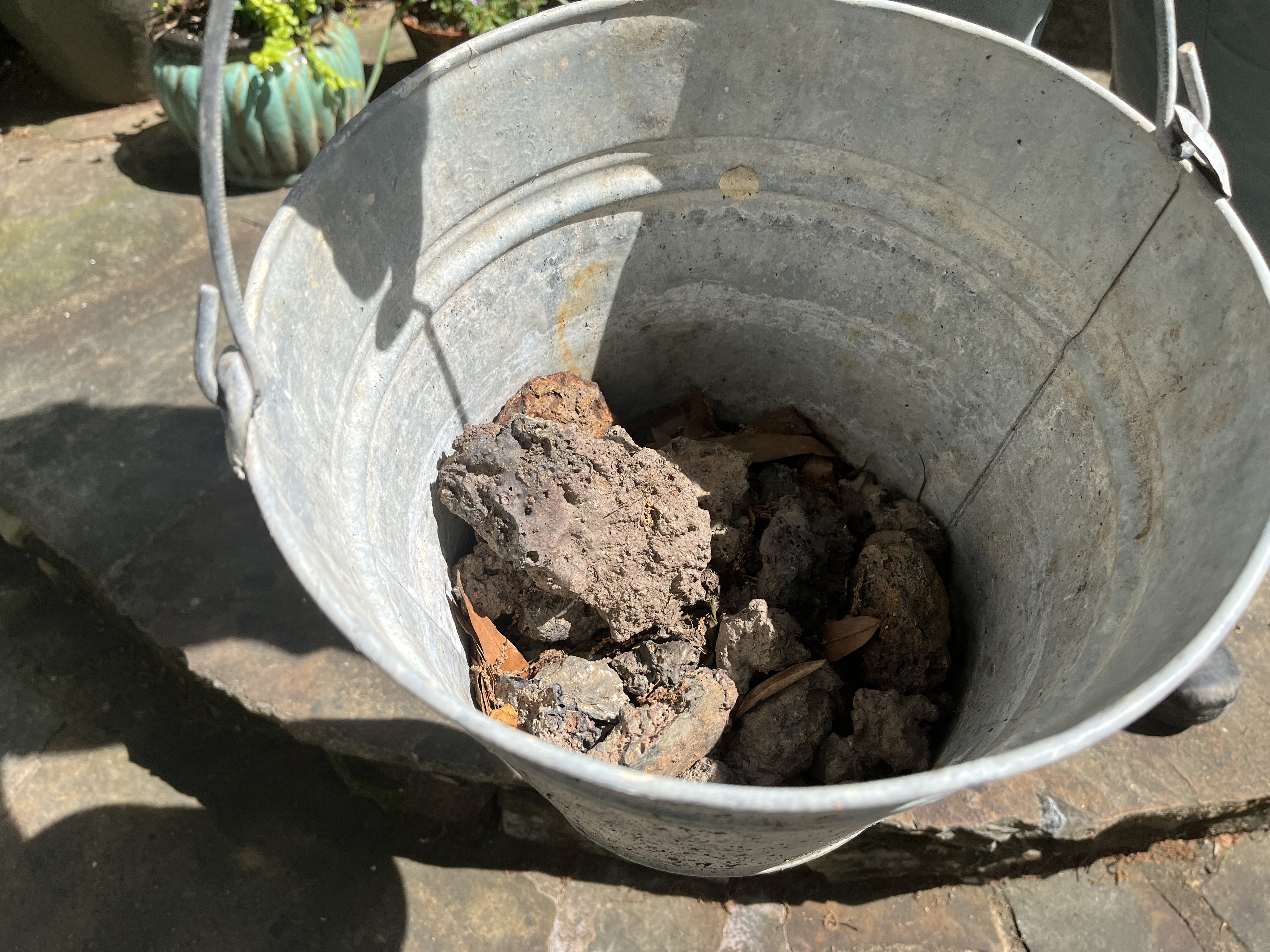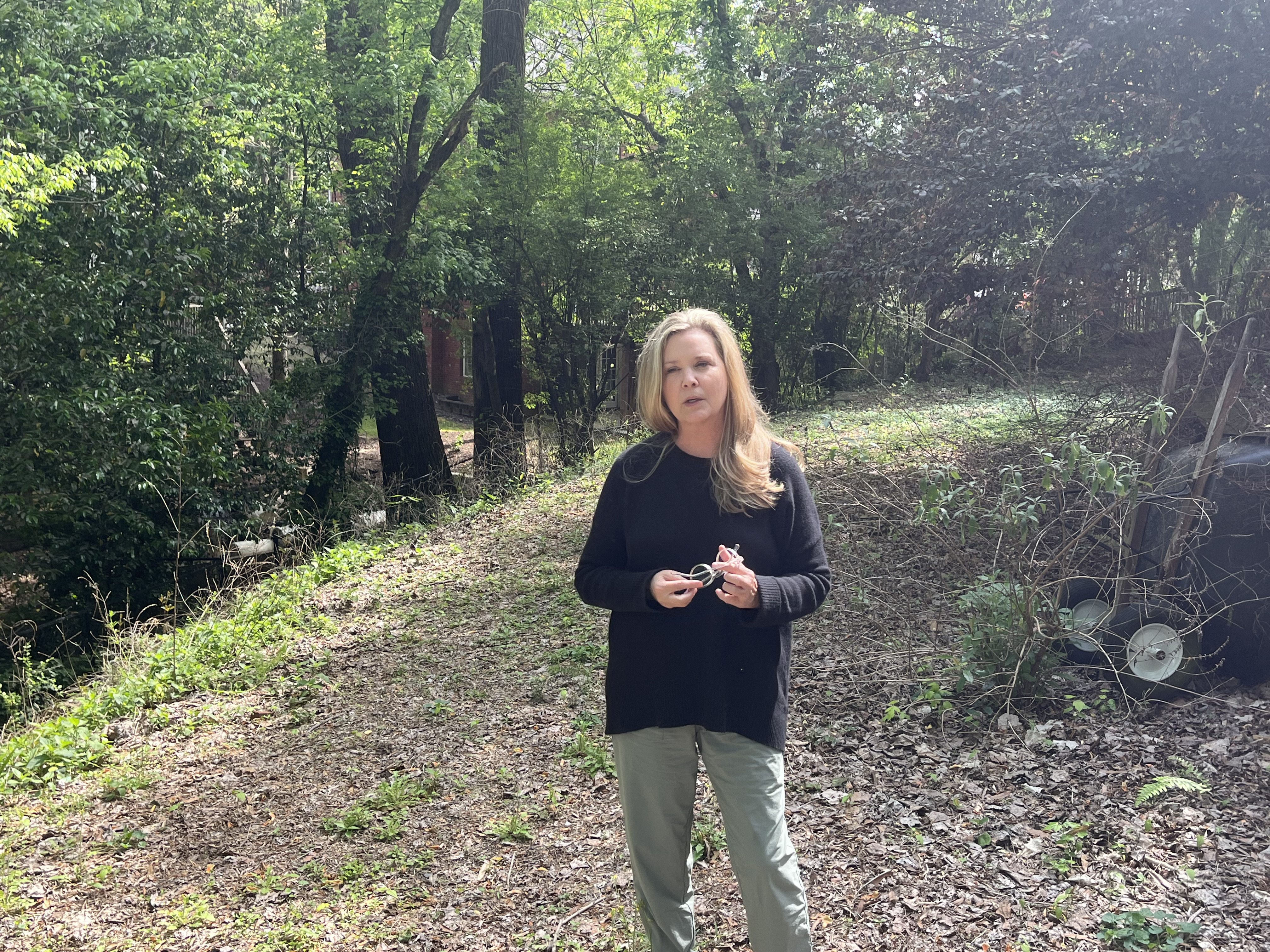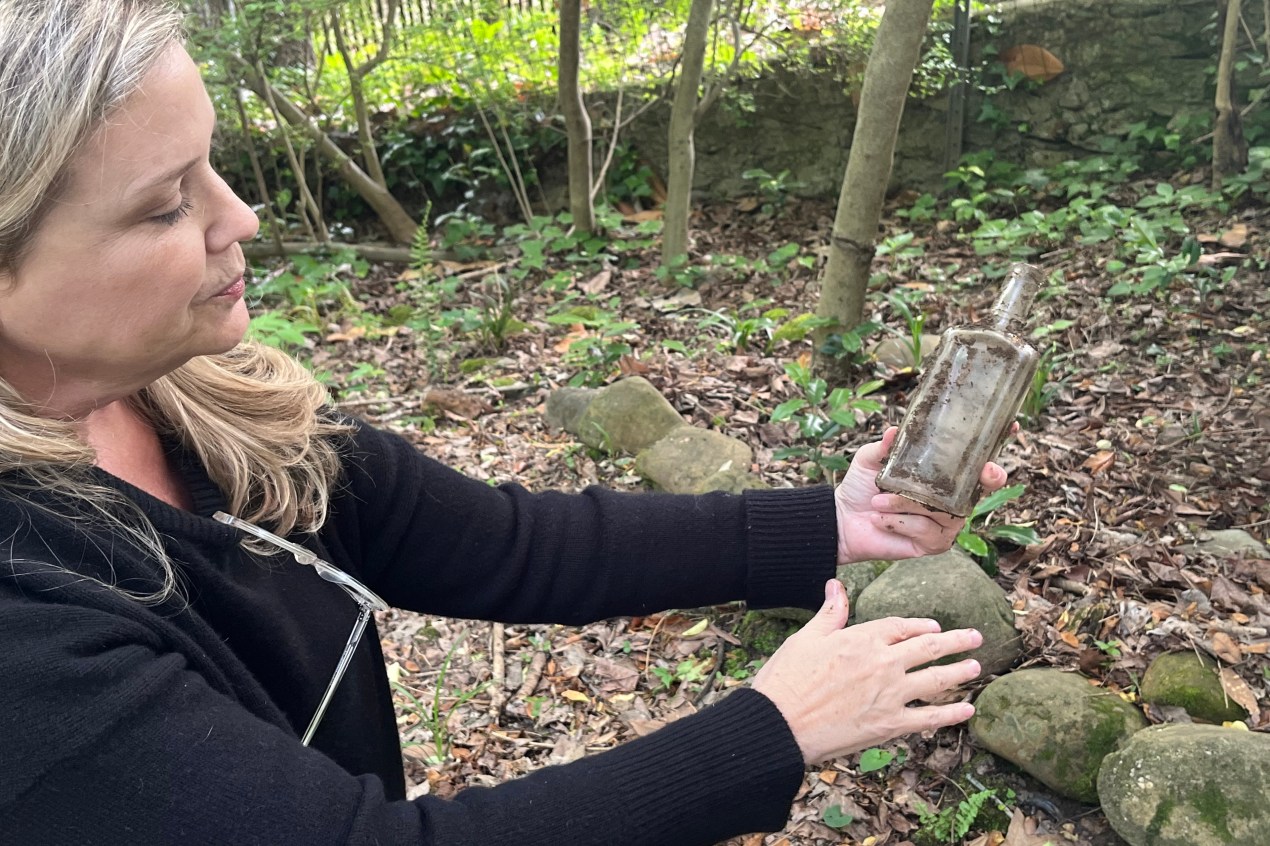ATLANTA — Elizabeth Burns had just come inside from gardening in 2021 when she caught a TV news report about a rocklike material contaminating a nearby community’s soil with lead.
She was stunned. Her own backyard had many such chunks.
The news segment identified the material as slag, a waste byproduct likely from long-closed metal-smelting foundries. Levels of lead were so high and widespread in the mostly low-income, west-side Atlanta community in the TV report that it was later deemed a Superfund site, a designation the Environmental Protection Agency gives to hazardous waste sites requiring long-term cleanup.
But there was no mention of Burns’ Peachtree Park neighborhood within the affluent Buckhead community less than 10 miles away. She turned to Google and found links to Georgia Health News stories about the Emory University team that discovered the west Atlanta problem.
Burns, 61, a psychotherapist who has had health problems since buying her house in 2016, emailed the team’s leader, environmental scientist Eri Saikawa. “I have tons of slag in my Buckhead yard too!” Burns wrote in the email, which included photos.
After testing the soil, the Emory team found high lead levels in her yard. Burns, determined to get help, said she sent the results to the state’s environmental agency, which forwarded the data to the EPA’s regional office. Months later, the federal agency determined the sample contained enough lead to warrant an urgent cleanup of Burns’ yard.
Lead, a powerful neurotoxin particularly dangerous to children, reemerged as a major health topic in 2016 when the Flint, Michigan, water crisis came to a head. Besides problems associated with drinking water from lead in pipes and fixtures and exposure to old paint in homes, lead has also tainted the soil in many areas across the country, according to EPA records. The agency said lead has been a “contaminant of concern” at more than 40% of sites that have been listed on the U.S. Superfund National Priorities List.
Burns’ property stands in contrast to many lead contamination sites — often in former industrial or waste disposal locations in or near low-income neighborhoods. Her yard shows that the English Avenue neighborhood west of downtown isn’t the only area of Atlanta with tainted soil. Saikawa said the Buckhead contamination likely extends beyond Burns’ yard. “It doesn’t make sense that it’s just one property,” Saikawa said.
EPA officials recently recommended Burns’ yard for a “time-critical” removal, meaning a plan to rid the site of dangerous contaminants needed to be initiated within six months. Of the roughly 100 such removals from designated Superfund sites completed each year, about 30% list lead as a key problem, according to EPA spokesperson Davina Marraccini.
As of early May, Burns was still waiting for the agency to approve the work.

In March, the EPA began contacting “selected properties of interest” in Burns’ neighborhood after KFF Health News, which now operates Georgia Health News, and an attorney representing Burns began asking about the extent of the problem.
Tim Frederick, EPA regional scientific support section chief, said he believes the lead at Burns’ property came from contaminated “fill dirt” used to level the land before the house was constructed in the 1950s. That’s similar to what happened in west Atlanta.
But another question nags Burns: whether her yard, including her former vegetable and herb garden — where contaminants were found — is linked to her health conditions.
In adults, lead poisoning can cause high blood pressure, joint and muscle pain, and abdominal pain. It also can cause miscarriages. Researchers have found that, even at low levels, lead can damage children’s brains, lowering intelligence and damaging their ability to control their behavior and attention.
Burns was diagnosed with breast cancer four years ago but is now cancer-free, she said. She has been anemic and in December received six infusions of iron. Burns also has experienced Sweet syndrome, a rare inflammatory skin condition, and has taken steroids to combat it.
Her teenage son has health concerns as well, she said. To maintain his privacy, Burns declined to identify his conditions and requested his name not be published.
She also wonders about the presence of other contaminants. Burns paid for lab tests to check the soil for other substances, like highly toxic dioxins, and she collected vacuum cleaner dust to check for material she may have tracked inside the house.
The Agency for Toxic Substances and Disease Registry said in an email to Burns that her property contained levels of uranium, radium, and thorium that were greater than the levels at which those radioactive materials typically exist in the environment and were closer to what might be found at a coal plant. But the agency also told Burns it doesn’t believe the levels are high enough to harm human health.
On a day in April following a rain, Burns’ yard was speckled with pieces of pottery, bottles, coke ash, and glass. Inside, she has a collection of empty vials of what appear to have been cosmetics, medicine, nail polish, and perfume, as well as a Coca-Cola bottle, all of which date from the 1920s to the ’40s. While the items themselves are not hazards, Saikawa said, they indicate the area was once a dumping ground. That’s what worries Burns.
“I had heavy interaction with material in my yard. I was digging deep and tilling and tracking it into my home,” said Burns, who has hired a consultant to get answers on the possible impact on her health. She lined up a pediatric toxicologist to test her son’s blood for clues to his health problems and is searching for similar testing for herself.

Next-door neighbor Chris Webster said he too has removed debris, including tires, what looked like a water heater, and pieces of brick and glass, from the bottom of a backyard slope. Webster agreed to have his yard tested for lead by the EPA, as have other neighbors. Still others have refused, according to the agency.
Across town in west-side Atlanta, tests have shown almost 500 properties have lead levels higher than the threshold of 400 parts per million requiring removal. The cleanup is underway but will take years to complete — and the boundaries of the site were expanded as more neighboring properties tested high in lead.
“Often environmental health concerns are greater for disadvantaged communities that are near a Superfund site,” said Nicole Deziel, an associate professor of epidemiology at the Yale School of Public Health. “There is a history of environmental racism where historically marginalized groups are more likely to live near toxic waste sites.”
But back in Buckhead, an upscale commercial and residential district, Burns’ property shows the problem also is found in neighborhoods like hers, where homes sell for a median price of $850,000, according to realtor.com. And it will be a tough cleanup challenge there, as crews need to replace the dirt across several backyard terraces that slope down to a creek. The EPA estimated the cleanup cost at $300,000 or more — paid for with agency funding.
The newfound knowledge creates a financial predicament for Burns and possibly her neighbors. Her home is her nest egg, her main investment. And college tuition for her son looms. Burns estimated she’s already out more than $15,000 from testing, attorney fees, and consultant costs.
She will have to disclose the contamination to prospective homebuyers and fears it will be a huge red flag.
“It will always be seen as a Superfund site,” she said.







